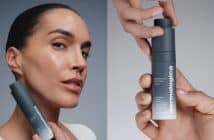Did you know that your body’s collagen production starts to decline in your 20s, often leading to the early appearance of frown lines? While older patients in their 30s and beyond have commonly undergone botulinum toxin A (BTA) treatments to smooth out dynamic wrinkles and fine lines, experts now suggest that starting these treatments earlier could have cumulative benefits for maintaining youthful skin.
To delve deeper into this topic, we interviewed Dr. Pek Chong Han, Consultant Plastic Surgeon and Medical Director of Polaris Plastic and Reconstructive Surgery. Dr. Pek shares his insights on the benefits and risks of starting BTA treatments early, provides valuable advice on how to obtain safe and effective preventive treatments, and more.
Interview with Dr Pek Chong Han, Consultant Plastic Surgeon and Medical Director of Polaris Plastic and Reconstructive Surgery

1) What causes our skin to age?
Dr Pek Chong Han: Skin ageing is caused by various factors, and is a natural part of our body’s ageing process. Collagen is the most abundant protein in the body and serves as the primary building block for the body’s skin, bones, and connective tissues.
After the age of 20, the skin produces 1% less collagen each year [1]. Additionally, women lose 30% more collagen during the first five years of menopause, on top of what they’ve lost since the age of 20 [2]. As a result, the skin becomes thinner, more fragile, and develop more visible ageing signs, such as roughness, dullness, sagging, dryness, and wrinkles.
Aside from collagen loss, other factors that can speed up the ageing process and cause skin wrinkling include:
- Exposure to ultraviolet radiation: UV rays break down the collagen and elastin fibres in the skin.
- Smoking: Promotes the production of an enzyme called metalloproteinase (MMPs), which are responsible for breaking down collagen in the skin [3].
- Exposure to air pollution: Poor quality air can negatively alter the cells that protect the DNA from damage, leading to early cell death and premature skin ageing [4].
- Repeated facial movements or expressions: Smiling, squinting, and frowning form tiny grooves (dynamic wrinkles) under the skin, which can become permanently etched into the skin with ageing.
2) When do patients start seeing signs of physical ageing and what are these signs?
Dr Pek Chong Han: Everyone ages differently, so there’s no specific time when signs of ageing will develop. However, since the body’s collagen production starts to decrease by the mid-20s, individuals may start noticing fine lines forming around age 25, with more obvious signs of dynamic wrinkles in their 30s [5]. Dynamic wrinkles that have become permanently etched in the skin often start to appear in the 40s and 50s, due to further collagen loss in the deeper layers of the skin [6].
3) What is botulinum toxin A (BTA), and how does it work to smooth dynamic lines and wrinkles?
Dr Pek Chong Han: Dynamic wrinkles occur when muscles attached to the overlying skin cause the skin to bunch together when you animate, i.e., frown, smile laugh, squint, etc. The areas of the face where dynamic wrinkles most often occur are the forehead when one furrows the brows, and crow’s feet near the corners of the eyes. They can also occur on the bridge of the nose, as forehead horizontal lines, periorbital lines (lines around the eyes), nasolabial folds (folds around the nose and mouth), and thick platysma bands around the neck, sometimes known as ‘turkey neck’.
BTA injections, such as Nabota®, weaken the muscles that cause animated expressions, by blocking or reducing the release of a neurotransmitter called acetylcholine, which is required for the muscle to contract. The absence of acetylcholine disables the muscles from contracting and creating facial expressions, thus preventing the formation of dynamic wrinkles.
Unlike previous generations, Nabota® is also the first Asian BTA approved by the United States Food & Drug Administration (US FDA), Health Canada, and the European Medicines Agency (EMA), backed by large-scale clinical data supporting its excellent safety and efficacy.
4) As a plastic surgeon, what are your thoughts on administering BTA or any minimally invasive treatments on younger patients? Are there certain patients you would not treat and why? What are the benefits of Preventive BTA treatments for patients in their 20s?
Dr Pek Chong Han: Before aesthetic treatments, BTA has a long record of safety and efficacy for other indications such as muscular dystonias (movement disorder that causes muscles to contract), blepharospasm (uncontrollable twitching and movements of the eyelids) and bruxism (clenching jaw) where it is injected into target muscles to reduce abnormal muscular action. Common in young children and adolescents [7], bruxism can result in damaged teeth, jaw pain and headaches at the temples if left untreated. Performing the procedure on patients under 21 will require a parent’s or a guardian’s consent.
Administering BTA treatments in patients in their 20s can help delay the onset of ageing by preventing lines and wrinkles from becoming permanently etched into the skin later on. This approach, known as ‘preventive BTA,’ allows young patients to maintain a youthful appearance for longer and potentially delay the need for more invasive procedures later in life.
A study involving identical twins showed the effectiveness of preventive BTA [8]. In the study, one twin received BTA treatments two to three times a year starting at age 25, while the other only had the injections twice in her life. After 20 years of regular BTA treatments, the twin who received consistent treatments had noticeably smoother skin and shallower wrinkles compared to her twin sister at the same age.
While BTA treatments are suitable for patients in their mid-20s, I would advise against treating patients under the age of 21 without parental/ guardian consent. In general, while the recognised minimum age for such injectables for aesthetic purposes in Singapore is 18, it is still prudent to have careful discussions with these patients and their parent/guardian(s) regarding the benefits and risks of such injectable procedures among younger individuals.
I also do not offer BTA treatments to patients with body dysmorphia, which is a mental health condition where individuals obsess over perceived physical flaws that are often non-existent or unnoticeable to others. As a plastic surgeon, I am particularly concerned about these patients because they frequently seek cosmetic treatments they may not actually need and tend to go through repeated procedures, each one more extreme than the previous. I usually identify signs of body dysmorphia during the clinical consultation process. A common red flag is when patients request specific procedures but cannot clearly identify why they need them.
5) Is there a right or wrong age for starting Preventive BTA treatments? Why?
Dr Pek Chong Han: There is no definitive right or wrong age for starting Preventive BTA treatments, as everyone ages differently. However, patients can consider undergoing the treatment as soon as they notice the formation of fine lines and wrinkles, which can become visible in the mid to late 20s.
6) How can receiving BTA treatments in your 20s prevent or delay the onset of ageing? How does this differ from undergoing BTA treatments in your 40s and 50s?
Dr Pek Chong Han: As collagen loss progresses with age, receiving BTA treatments in your 20s can help delay the onset of ageing and maintain a youthful appearance for longer, by preventing dynamic wrinkles from becoming permanently etched into the skin.
Older individuals generally require more aggressive treatments due to major changes in the skin, including pronounced wrinkling and sagging from increased volume and elasticity loss. For example, if patients in their 40s and 50s who have never undergone facial rejuvenation seek treatment, they would likely require a combination of procedures, such as BTA to relax muscles, dermal fillers to replace volume loss and skin boosters to hydrate the skin – compared to those in their 20s and 30s who may require only BTA to smoothen fine lines, and some treatments to improve hydration. Often, even surgical procedures may be required for more visible results.
7) How do aesthetic applications or trends for older patients (50s and above) differ from those for younger patients? How can Preventive BTA help delay or reduce the signs of ageing in older patients?
Dr Pek Chong Han: My approach to any treatment is to always understand the patient’s needs and provide the most suitable solutions so they look their best at any age. However, some general trends can be observed across different age groups. For example, patients in their 20s and 30s often prefer subtle enhancements and are more open to returning for regular treatments. For this demographic, I usually prescribe targeted lower-dose BTA treatments to achieve noticeable yet natural-looking results. Additionally, treating early wrinkles at a younger age is generally simpler and less expensive than addressing deep-set wrinkles in older individuals who have not done anything to reduce them.
For individuals in their 50s and above, more aggressive treatments such as plastic surgery, including facelifts and neck lifts, may be required to address advanced signs of ageing, such as jowling, sagging, and deflation. Patients in their 50s and 60s are not typically the best candidates for preventive BTA, as they may already be experiencing significant skin sagging and aggressively treating forehead lines with BTA in older patients can sometimes lead to further sagging of the brows and eyelids.
8) What are the disadvantages or downside of undergoing regular BTA treatments in your 20s?
Dr Pek Chong Han: While BTA is effective in paralyzing the underlying muscles during facial animation to prevent frown lines, regular BTA treatments can lead to atrophy of the targeted muscles over time. Excessive atrophy of the treated muscles, or over-treatment with BTA, can lead to a drawn, hollow appearance, which can cause one to look aged – the opposite of what is intended. For this reason, it is crucial for doctors to strike a balance when administering long-term BTA treatments in young patients by reducing the dose and frequency of BTA to maintain satisfactory results over subsequent treatments. Most BTA treatments can last anything from three to nine months, so in my practice, I typically do not deliver more than two treatment sessions per year in the same patient.
9) What precautions should patients take before and after BTA treatment?
Dr Pek Chong Han: In the days leading up to your BTA treatment, you’ll need to avoid anything that can interfere with your results or worsen side effects. To lower your risk of bleeding and bruising during and after treatment, avoid blood thinners, including non-steroidal anti-inflammatory drugs (NSAIDs) such as aspirin and fish oils, as well as alcohol, three to five days before treatment.
After treatment, you can resume your daily activities, but avoid exercise for 24 hours, as exertion increases the risk of bruising and swelling and raises the chances of the product diffusing to the surrounding areas rather than remaining in the treated area. Patients should also avoid alcohol and NSAIDs for the next 24 hours after treatment, and avoid saunas, facial massages, excessive sun exposure, and water sports for the next seven days to reduce the risk of infection at the injection sites.
10) What advice do you have for our readers when selecting a doctor for BTA treatments?
Dr Pek Chong Han: When seeking an aesthetic practitioner for your cosmetic needs, it is crucial to check the credentials of the practitioner, as only registered doctors are allowed to perform aesthetic treatments in Singapore. To verify that your doctor is properly licensed and certified with Singapore’s Ministry of Health (MOH), you can search for their name on the MOH website through this link: MOH Professional Search.
In addition, while people often think patients only consult plastic surgeons for invasive procedures, plastic surgeons are approved by the MOH to deliver the full range of approved and available surgical and non-surgical aesthetic treatments.
So, when both younger and older patients consult plastic surgeons for their cosmetic needs, they benefit from a wide array of potential procedures and receive thorough explanations of how each treatment can affect future procedures. For example, less invasive treatments like nose thread lifts can complicate and increase the complexity of future rhinoplasty and facelift surgery due to scarring from those treatments.
Plastic surgeons can also map out long-term aesthetic plans for patients as soon as they are ready, starting with non-invasive and/or minimally invasive strategies such as injectables in their 30s and 40s, and possibly progressing to surgery in their 50s to 60s, to help them maintain their appearance and look their best for many years to come.
References:
- https://www.scientificamerican.com/article/why-does-skin-wrinkle-wit/#:~:text=After%20the%20age%20of%2020,production%2C%20and%20less%20GAG%20formation
- https://www.aad.org/public/everyday-care/skin-care-secrets/anti-aging/skin-care-during-menopause#
- https://ash.org.uk/resources/view/how-smoking-affects-the-way-you-look#:~:text=One%20explanation%20is%20that%20smoking,and%20causing%20it%20to%20sag
- https://www.research.colostate.edu/healthyagingcenter/2021/11/19/pollution/
- https://my.clevelandclinic.org/health/diseases/10984-wrinkles
- https://healthcare.utah.edu/cosmetic/wrinkles-volume-loss
- https://www.sleepfoundation.org/bruxism
- https://www.liebertpub.com/abs/doi/10.1001/archfaci.8.6.426



